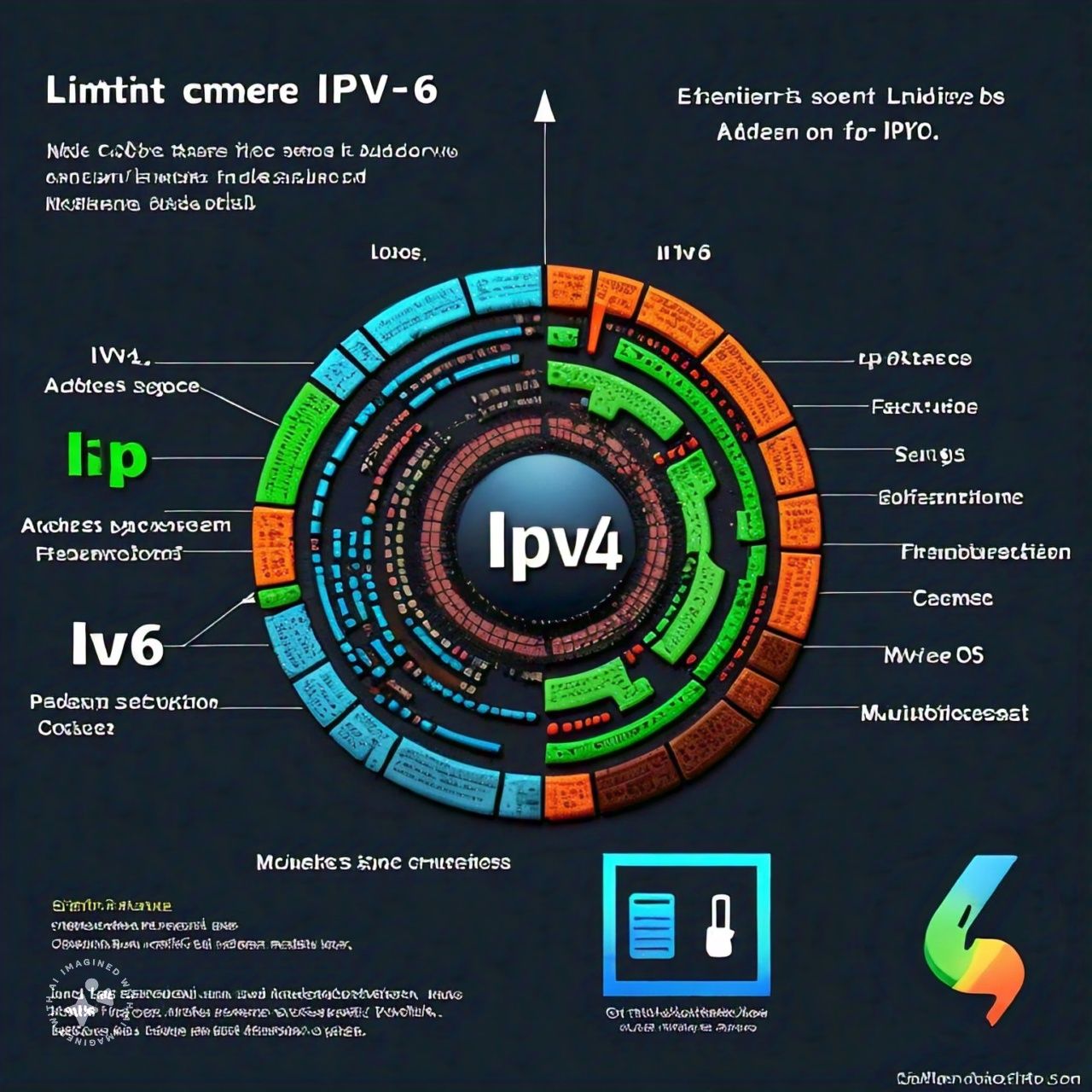The difference between ipv6 and ipv4 and it’s limitations
IPv4 (Internet Protocol version 4) and IPv6 (Internet Protocol version 6) are two different versions of the Internet Protocol. They are primary protocol used for communicating on the internet.
These are the main differences between IPv4 and IPv6:
1. Address space:
– IPv4 uses 32-bit addresses, allowing for approximately 4.3 billion unique addresses.
– IPv6 uses 128-bit addresses, allowing for virtually unlimited unique addresses (approximately 3.4 x 10^38).
2. Address format:
– IPv4 addresses are typically written in dotted decimal notation (e.g., 192.0.2.1).
– IPv6 addresses are written in hexadecimal notation (e.g., 2001:0db8:85a3:0000:0000:8a2e:0370:7334).
3. Header format:
– IPv6 headers are simplified and improved, with fewer fields and options.
4. Fragmentation:
– IPv4 routers perform fragmentation, which can lead to performance issues.
– IPv6 routers do not perform fragmentation; instead, they use extension headers to handle large packets.
5. Security:
– IPv6 includes built-in support for IPsec (Internet Protocol Security) encryption and authentication.
6. Mobility:
– IPv6 provides improved support for mobile devices and networks.
7. Quality of Service (QoS):
– IPv6 includes built-in support for QoS, which enables prioritization of certain types of traffic.
Overall, IPv6 is designed to provide a more scalable, secure, and efficient internet infrastructure, while IPv4 is still widely used but has limitations due to its aging design.
Limitations of ipv4
1. Limited address space: it only allow 4.3 billion unique addresses are possible. It can’t accommodate growing number of devices needing IP addresses.
2. Fragmentation: Routers perform fragmentation, which can result to performance issues.
3. Security: IPv4 has limited security features and is vulnerable to attacks like IP spoofing.
4. Mobility: IPv4 does not support mobile devices and networks well.
5. Quality of Service (QoS): IPv4 does not have built-in support for QoS, making it difficult to prioritize certain types of traffic.
6. Multicast: IPv4 has limited support for multicast, making it inefficient for applications like video streaming.
7. Header format: The IPv4 header is complex and has many optional fields, which can lead to performance issues.
8. Limited scalability: IPv4 is not designed to handle the growing demands of the internet.
9. NAT dependence: Many networks rely heavily on Network Address Translation (NAT) to conserve addresses, which can result to issues with peer-to-peer connections and application compatibility.
10. Lack of end-to-end connectivity: NAT and firewalls can break end-to-end connectivity, making it difficult for certain applications to work properly.
These limitations led to the development of IPv6, which aims to address these issues and provide a more scalable, secure, and efficient internet infrastructure.
Limitations for ipv6
While IPv6 offers many improvements over IPv4, it also has some limitations and challenges:
1. Backward compatibility: IPv6 is not directly compatible with IPv4. It requires transition mechanisms like dual stacking or tunneling.
2. Adoption rate: Despite its benefits, IPv6 adoption is still not widespread, and many networks and devices still rely on IPv4.
3. Fragmentation: While IPv6 routers do not perform fragmentation, it can still occur if packets are sent to IPv4 networks.
4. Extension headers: IPv6’s use of extension headers can result hito performance issues and security concerns.
5. Security: While IPv6 has built-in security features, it is not immune to threats and vulnerabilities.
6. Privacy: IPv6 addresses can be used to track devices and users more easily than IPv4 addresses.
7. DNS issues: IPv6 requires DNS64 and other transition mechanisms to work with IPv4-only DNS servers.
8. Network address translation (NAT): While IPv6 reduces the need for NAT, it is still required in some cases.
9. Quality of Service (QoS): IPv6’s QoS capabilities are not yet widely implemented.
10. Interoperability: Different IPv6 implementations and configurations can lead to interoperability issues.
11. Training and expertise: IPv6 requires specialized knowledge and training for network administrators.
12. Hardware and software support: Some older devices and software may not support IPv6.
Despite these limitations, IPv6 is designed to provide a more scalable, secure, and efficient internet infrastructure, and its adoption is continually growing.
